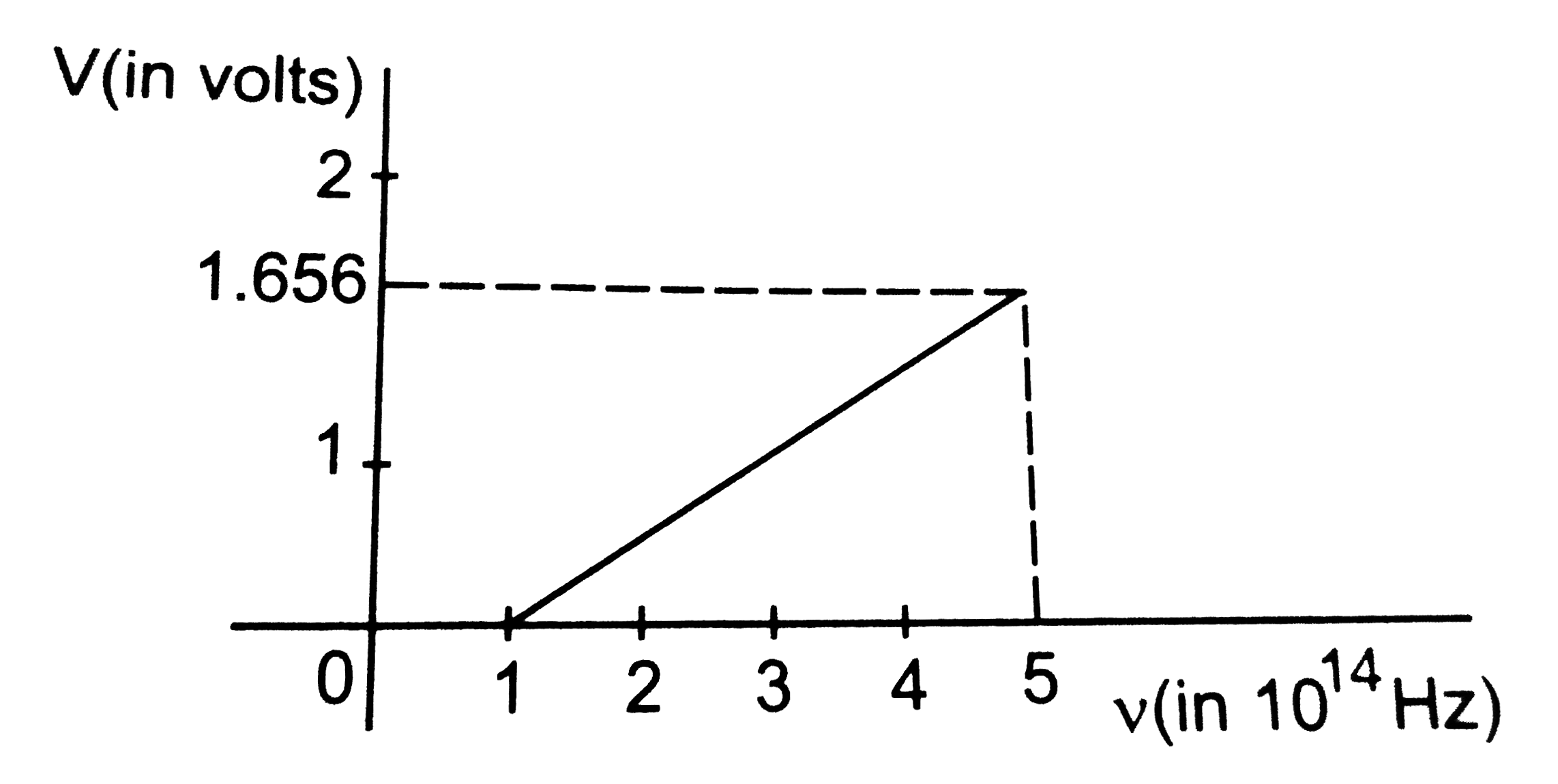X-rays of frequency u were used to irradiate sodium and copper surfaces in two separate experiments and their stopping potentials were found to be Na and V' cu If the work function of Cu> work function of Na, then
VNa>VCu
VNa−VCu
VNa<VCu
VNaand VCu are inversely proportional to ε
The correct Answer is:A
To solve the problem, we need to analyze the relationship between the stopping potentials of sodium (Na) and copper (Cu) when irradiated with X-rays of frequency ν0.
1. Understand the Photoelectric Effect:
The photoelectric effect states that when light (or electromagnetic radiation) hits a material, it can eject electrons from that material if the energy of the incoming photons is greater than the work function of the material.
2. Define Work Function:
The work function (ϕ) is the minimum energy required to remove an electron from the surface of a material. For sodium, we denote it as ϕNa and for copper as ϕCu.
3. Given Information:
We know that ϕCu>ϕNa. This means that copper requires more energy to eject an electron compared to sodium.
4. Photoelectric Equation:
The maximum kinetic energy (Kmax) of the emitted electrons can be expressed using the photoelectric equation:
Kmax=hν−ϕ
where h is Planck's constant and ν is the frequency of the incident radiation.
5. Express Stopping Potential:
The stopping potential (V) is related to the maximum kinetic energy of the emitted electrons. It can be expressed as:
Kmax=eV
where e is the charge of the electron. Thus, we can write:
eVNa=hν−ϕNa
eVCu=hν−ϕCu
6. Relate Stopping Potentials:
Rearranging the equations for stopping potentials gives us:
VNa=hν−ϕNae
VCu=hν−ϕCue
7. Compare Stopping Potentials:
Since ϕCu>ϕNa, we can compare the two expressions:
VNa=hν−ϕNaeandVCu=hν−ϕCue
Because ϕCu is larger than ϕNa, it follows that:
hν−ϕNa>hν−ϕCu
Therefore,
VNa>VCu
Conclusion:
The stopping potential for sodium (VNa) is greater than that for copper (VCu):
VNa>VCu
The photoelectric effect states that when light (or electromagnetic radiation) hits a material, it can eject electrons from that material if the energy of the incoming photons is greater than the work function of the material.
The work function (ϕ) is the minimum energy required to remove an electron from the surface of a material. For sodium, we denote it as ϕNa and for copper as ϕCu.
We know that ϕCu>ϕNa. This means that copper requires more energy to eject an electron compared to sodium.
The maximum kinetic energy (Kmax) of the emitted electrons can be expressed using the photoelectric equation:
Kmax=hν−ϕ
where h is Planck's constant and ν is the frequency of the incident radiation.
The stopping potential (V) is related to the maximum kinetic energy of the emitted electrons. It can be expressed as:
Kmax=eV
where e is the charge of the electron. Thus, we can write:
eVNa=hν−ϕNa
eVCu=hν−ϕCu
Rearranging the equations for stopping potentials gives us:
VNa=hν−ϕNae
VCu=hν−ϕCue
Since ϕCu>ϕNa, we can compare the two expressions:
VNa=hν−ϕNaeandVCu=hν−ϕCue
Because ϕCu is larger than ϕNa, it follows that:
hν−ϕNa>hν−ϕCu
Therefore,
VNa>VCu
The stopping potential for sodium (VNa) is greater than that for copper (VCu):
VNa>VCu
Topper's Solved these Questions
- BOOK - MTG-WBJEECHAPTER - PARTICLE NATURE OF LIGHT AND WAVE PARTICLE DUALISMEXERCISE - WB JEE PREVIOUS YEARS QUESTIONS15videos
PARTICLE NATURE OF LIGHT AND WAVE PARTICLE DUALISM
- BOOK - MTG-WBJEECHAPTER - OSCILLATIONS AND WAVESEXERCISE - WB JEE PREVIOUS YEARS QUESTIONS (CATEGORY 3: ONE OR MORE THAN ONE OPTION CORRECT TYPE (2 MARKS))2videos
OSCILLATIONS AND WAVES
- BOOK - MTG-WBJEECHAPTER - SOLID STATE ELECTRONS EXERCISE - WB JEE Previous Years Questions (CATEGORY 1 : Single Option Correct Type)15videos
SOLID STATE ELECTRONS
Similar Questions
Light strikes a sodium surface, causing photoelectric emission. The stopping potential for the ejected electrons is 5.0 V, and the work function of sodium is 2.2 eV. What is the wavelength of the incident light?
View SolutionStopping potential [V volts] is plotted against frequancy of light used [→].
Find work function (eV)
_S01_084_Q01.png) View Solution
View Solution
Knowledge Check
- Question 1 - Select One
X-rays are used to irradiate sodium and copper surfaces in two separate experiments and stopping potential are determined. The stopping potential is
Aequal in both casesBgreater for sodiumCgreater for copperDinfinite in both cases - Question 2 - Select One
If a photocell is illuminated with a radiation of 1240A, then stopping potential is found to be 8 V. The work function of the emitter and the threshold wavelength are
A1 eV,5200AB2 eV,6200AC3 eV,7200AD4 eV,4200A - Question 3 - Select One
Photons of energy 5.5 eV are incident on a metal surface. If the stopping potential is 3V, then the work function of the metal will be
A2.5 eVB2 eVC8.5 eVD1.5 eV
Figure is the plot of the stopping potential versus the frequency of the light used in an experiment on photoelectric effect. Find (a) the ratio h/e and (b) the work function.
 View Solution
View SolutionThe work function of Silver and sodium are 4.6and2.3eV, respectively . The ratio of the slope of the stopping potential versus frequency plot for silver to that of sodium is
View SolutionAn ultraviolet light of wavelength 2000 Å irradiates a photo cell made of molybdenum metal . If the stopping potential is −1.5V , what is the work function of the metal ?
View SolutionLight of frequency 1015 Hz falls on a metal surface of work function 2.5 eV. The stopping potential of photoelectrons in volts is
View SolutionA photon of energy 12 V falls on metal surface whose work function is 4.15 eV . The stopping potential is
View Solution

